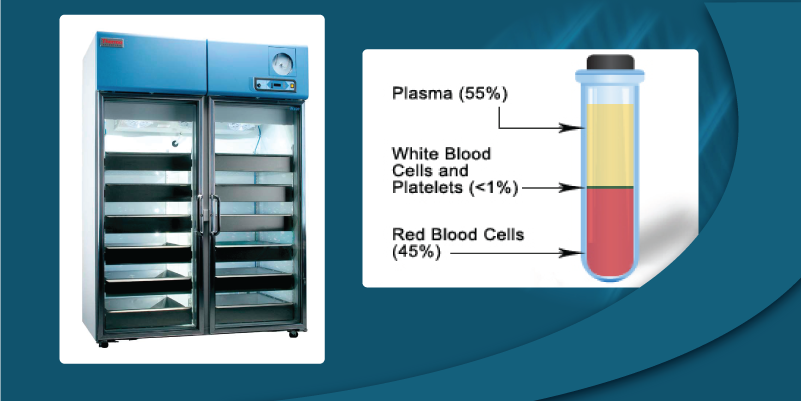Blood banks have been in use in the United States since 1917 during World War I. Oswald Hope Robertson used sodium citrate as an anticoagulant to store the blood donated by soldiers in glass bottles. Today there are many different forma of anticoagulants on the market that allow for longer preservation and storage. Collection and preservation methods for blood products also require cooling. Modern blood banks store whole blood and red blood cells at around 33.8⁰F to 42.8⁰F.

This allows blood products to be stored for 35 to 42 days after donation. Whole blood, is donated blood that contains only an anticoagulant. Separated red blood cells via centrifuge from whole blood are the most commonly used blood product. Red blood cells are separated from whole blood and kept in solution. Once red blood cells are separated plasma and buffy coat are left over. Plasma must be frozen and stored at -22⁰F to 0⁰F. Buffy coat is where platelet cells are located, they can be stored at room temperature, but only last for five to seven days.

Identifying blood types is of vital importance. There are four different blood groups possible A, B, AB, and O.
However, there are eight blood types possible because of Rh antigens, each blood group can be either positive or negative. The difference of each group is caused by the presence of A or B antigens. Antigens are what trigger the body’s immune system to respond to foreign presences in the body. If blood with the wrong antigen identifiers is transfused into a body it may trigger an immune reaction and cause
death of the recipient.
